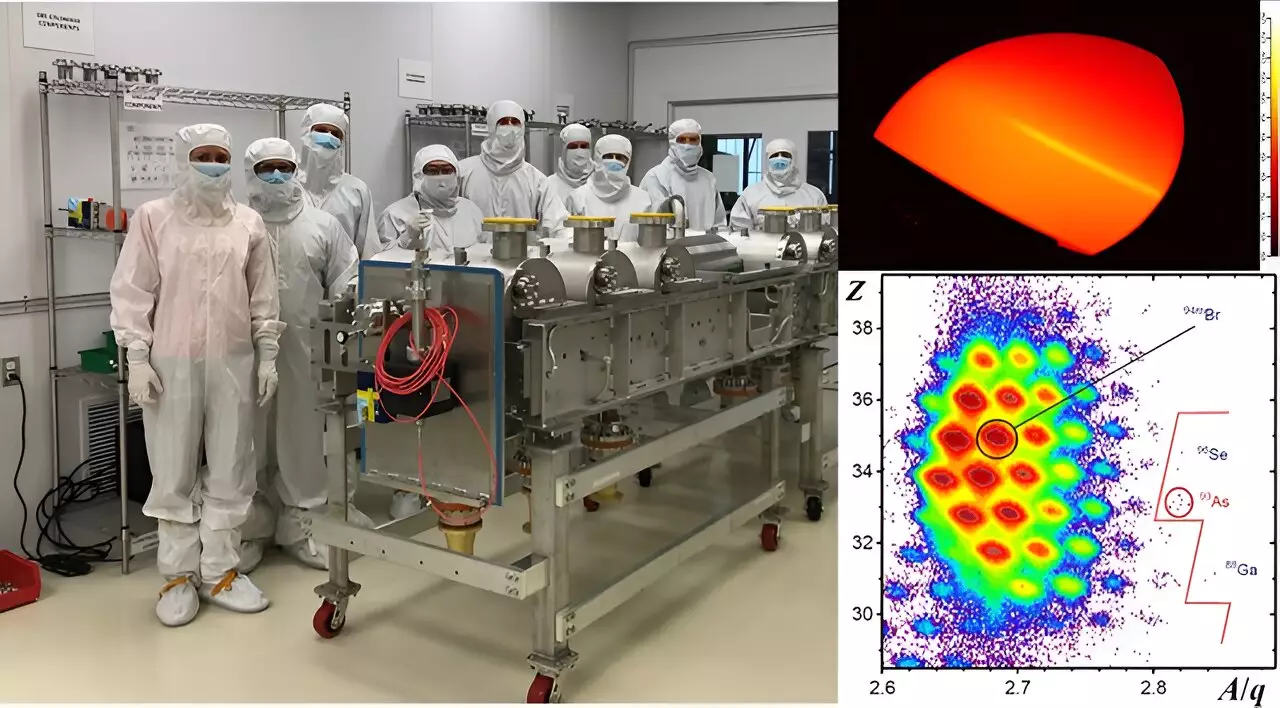In a significant scientific achievement, researchers at the Facility for Rare Isotope Beams (FRIB) have made headway in the realm of isotope studies by successfully accelerating a beam of uranium ions to an unprecedented continuous power output of 10.4 kilowatts. This remarkable milestone underscores the facility’s commitment to enhancing research capabilities, particularly regarding the elusive rare isotopes that play a vital role in numerous scientific inquiries. Published in the esteemed journal *Physical Review Accelerators and Beams*, this breakthrough is positioned to significantly broaden the horizons of nuclear science.
The Significance of Uranium in Scientific Research
Uranium has long been recognized as one of the most challenging elements to accelerate. Despite its complexities, it holds immense importance in scientific research. Considered by the National Academy of Sciences and the Nuclear Science Advisory Committee, uranium is integral to over 17 of the highest-priority scientific programs involving rare isotope beams. What sets uranium apart is its ability to produce a diverse range of isotopes through fragmentation or fission. This capability places it at the forefront of isotope production, making the recent advancements in beam acceleration all the more crucial.
The acceleration of the uranium beam not only establishes a new standard but also provides a groundbreaking platform for further exploration within the nuclear landscape. Within the initial eight hours of operating this high-power beam, the scientists at FRIB successfully identified three new isotopes: gallium-88, arsenic-93, and selenium-96. The swift identification of these isotopes accentuates the efficiency of the new system and illustrates the potential this advancement holds for future research.
The record-breaking accomplishments in uranium beam acceleration were made possible through a series of innovative technical adaptations and enhancements at FRIB. These include a state-of-the-art superconducting linear accelerator, which consists of 324 resonators housed in 46 cryomodules, and a cutting-edge liquid-lithium stripper. Additionally, significant advancements in technology, such as the Electron Cyclotron Resonance (ECR) ion source for uranium production and the specialized heavy-ion Radio-Frequency Quadrupole (RFQ), have been pivotal in facilitating this research.
Notably, FRIB scientists implemented novel methodologies that allowed for the simultaneous acceleration of multiple charge states of uranium. This was achieved through liquid-lithium film stripping, proving immensely successful in attaining record-high power levels. The production and identification of gallium-88, arsenic-93, and selenium-96 in a 1.2 mm graphite target exemplify the collaborative efforts of researchers from the United States, Japan, and South Korea, marking a decisive step in global scientific partnership.
As the scientific community stands at the precipice of new discoveries, the implications of FRIB’s success in uranium beam acceleration are boundless. This achievement not only fosters deeper inquiries into previously unexplored regions of nuclear physics but also enhances our understanding of the fundamental characteristics of rare isotopes. Undoubtedly, this milestone at the Facility for Rare Isotope Beams heralds an exciting chapter of exploration, paving the way for unprecedented advancements in nuclear science and isotope research.

